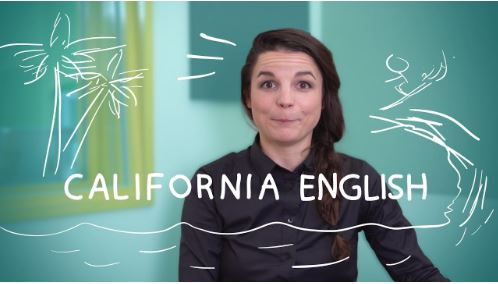How to Sound More Like a Native Californian When Speaking English
You can sound more like a Californian even if English isn’t your first language. It’s not about using fake accents or forcing slang. It’s about understanding how speech patterns, vowel changes, and local habits shape the way people from California speak.
California is big. So, no, there isn’t just one way to sound Californian. But there are features common to many regions here—especially among younger speakers. If you’re trying to sound natural, confident, and local, the journey starts with understanding how their English sounds in real life.
Let’s begin with the most important part. California English has a system-wide vowel shift that’s been studied by linguists for decades. It affects how people pronounce simple words every day.
The California Vowel Shift changes how people say common vowel sounds. One of the most visible examples is the word “dude.” It stretches out into “duuuuude,” with the vowel pushed forward in the mouth. “Back” starts sounding like “bock.” “Lit” begins to sound more like “let.”
You may not notice these small differences if you’re not tuned in. But locals hear it immediately. They might not describe it in linguistic terms. But they recognize if a voice sounds local or not. If your vowel sounds match theirs, you’re already closer to blending in.
Here’s another change: for many Californians, the words “cot” and “caught” sound the same. They pronounce both with a single vowel sound. Same with “Mary,” “merry,” and “marry.” These merge into one vowel that might confuse non-locals. But it’s a real marker of local speech.
Learning how people talk starts with how they live
Language reflects culture. Californians tend to speak in a relaxed, open, and casual way. That matches the local lifestyle. Sunshine, beaches, startups, and coffee shops influence how people interact. If you sound too formal, you might come across as stiff or distant.
Here’s something practical. Watch how people speak in shows set in California. Try The O.C., Never Have I Ever, or even reality shows like Selling Sunset. These don’t represent all of California. But the speech patterns are real and modern. They help you catch the rhythm, tones, and local phrasing.
Want faster progress? It helps to work with someone who hears the difference. That’s where English Tutors come in. They help you hear things you don’t notice yourself. You can record your voice, get feedback, and track changes. It’s not about memorizing lines. It’s about training your ear and tuning your accent step by step.
Your mouth movements tell more than your words
Pronunciation isn’t just about sound. It’s about how your mouth moves when you talk. Native Californians often keep their mouths slightly more open than you’d expect. Try saying “did that” quickly. A Californian might say “did tha ” with the final “t” softened or dropped. This kind of casual elision happens a lot in everyday talk.
Another clue? Californians pronounce their “r”s very clearly. Not overly strong. But firm and present. Compare “better” said in British English versus in Southern California. In California, you’ll hear the “r” almost roll at the end. “Bett-rrr.”
That might seem minor. But small pronunciation choices make your voice sound local. That’s what you want to practice. It doesn’t mean copying someone’s entire tone. Just adjusting these speech muscles slightly brings a big change.
Pitch, rhythm, and speech flow matter a lot. In many parts of California, especially Southern areas like Los Angeles and Orange County, speakers often use uptalk. That means raising your pitch at the end of a sentence. Not because it’s a question. But just part of how they keep the flow going.
You might hear something like: “I was going to the store?” The sentence isn’t a question. But the rising tone makes it sound more engaging. It can also sound hesitant or uncertain. But among locals, it’s a common pattern, especially in casual talk.
Another common feature is vocal fry. This happens when your voice drops into a lower, scratchy tone—usually at the end of a sentence. It’s more common among younger speakers, especially women. Linguists call it creaky voice. Critics sometimes mock it. But it’s a real part of modern Californian English.
These speech traits aren’t necessary to mimic fully. But knowing them helps you understand why Californians sound the way they do. That’s how you can begin adapting your voice without sounding forced.
Fillers and slang aren’t just fluff—they shape conversations
Californian English is full of discourse markers. That’s just a fancy way of saying words like “like,” “so,” “totally,” and “dude” that don’t carry information but do shape the rhythm and tone of a sentence. If you want to sound local, you need to get comfortable with how and where these words appear.
Let’s take the word “like.” It’s not just a filler. It introduces stories, reactions, even quotes. You’ll hear someone say, “I was like, no way,” or “She’s like, totally into it.” This pattern is common across age groups in California, even in professional settings when the tone is casual.
The key is placement and rhythm. Don’t overload your sentence with fillers. Use them where locals use them—naturally. Try saying: “I was like walking down the street, and this guy just, like, waves at me.” If that sounds too much, cut it in half. The point is rhythm and tone, not volume.
Slang also plays a role. Words like “dude,” “hella” (more common in Northern California), and “for sure” help you fit in. But again, balance is key. You don’t need every sentence to sound like a surfer movie. One well-placed “dude” or “totally” makes a difference.
Conclusion: sounding local is about small, repeated effort
Sounding like a native Californian isn’t about faking an accent. It’s about understanding the rhythm, vowels, slang, and cultural tone that shape the way people talk here. You don’t need to sound like a surfer or a startup founder. You need to sound aware.
The more you immerse yourself, the more natural your voice becomes. If you’re living in California or planning to, it’s smart to find people to talk with regularly. But if you’re not local, don’t worry. You can still access authentic voices through online courses.
Look for English classes near me that focus on real conversation. Not textbook pronunciation. You want a space where you can experiment, make mistakes, and get real-world feedback. That’s how Californians learned too—by speaking a lot, listening more, and picking up tone over time.




